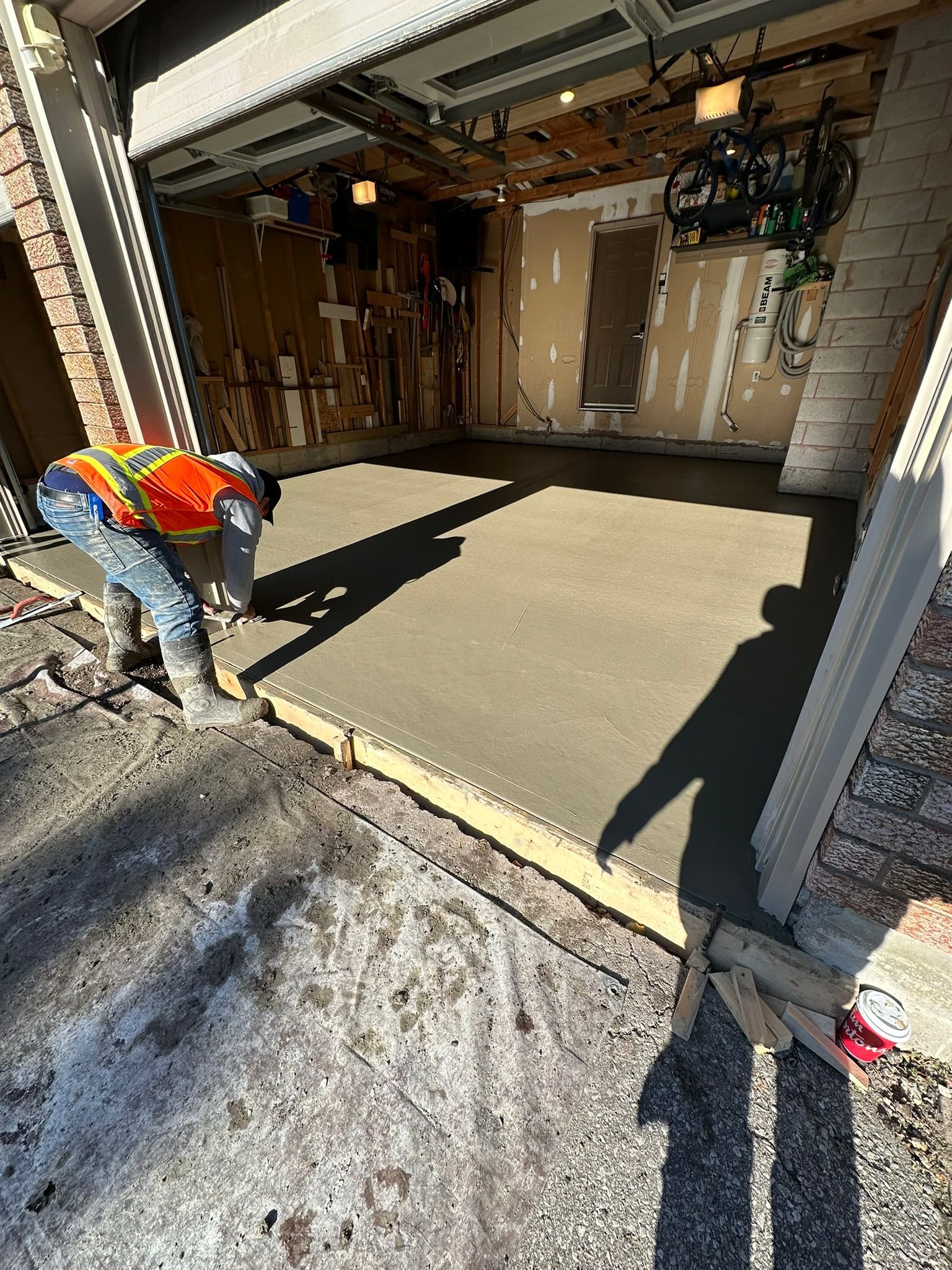What is the Best Time of Year to Install Concrete in GTA?
Installing a concrete driveway in GTA, Ontario, requires careful consideration of timing to ensure durability and longevity. The region's distinct seasons present unique challenges and opportunities for concrete installation. Understanding the impact of weather conditions on concrete can help you choose the optimal time for your project.
Before delving into the best time for installation, it's essential to grasp the basics of concrete installation and curing.
The Concrete Installation Process: Concrete installation involves mixing cement, water, and aggregates (like sand or gravel) to create a workable paste. This mixture is poured into prepared forms and allowed to harden, forming a solid, durable surface.
Importance of Proper Curing: Curing is the process of maintaining adequate moisture, temperature, and time to allow the concrete to achieve desired strength and durability. Improper curing can lead to surface cracking, reduced strength, and other issues.
Seasonal Considerations for Concrete Installation in Markham
Markham experiences a humid continental climate, characterized by cold winters and warm summers. Each season presents specific considerations for concrete installation.
Spring: A Favorable Season
Spring offers moderate temperatures and increased sunlight, creating ideal conditions for concrete work. As the chill of winter fades, daytime temperatures typically range between 10°C and 20°C, which is excellent for concrete curing.
Advantages:
Moderate Temperatures: These conditions facilitate optimal curing, reducing the risk of cracking and ensuring a strong, durable finish.
Predictable Weather: Spring typically brings stable weather patterns, minimizing unexpected delays.
Considerations:
Ground Conditions: Early spring may still have frozen ground or excessive moisture from melting snow, which can affect the installation process.
Summer: Proceed with Caution
Summer in Markham brings warmer temperatures, which can accelerate the curing process. While this might seem beneficial, it can lead to challenges.
Advantages:
Extended Daylight: Longer days allow for flexible scheduling and extended working hours.
Considerations:
High Temperatures: Excessive heat can cause concrete to set too quickly, leading to potential cracking and reduced strength.
Humidity and Rain: Summer storms can introduce excess moisture, disrupting the curing process.
Fall: An Optimal Choice
Fall presents another window of opportunity for concrete installation, with cooler temperatures and lower humidity levels.
Advantages:
Stable Temperatures: Cooler weather allows for controlled curing, enhancing the concrete's durability.
Low Humidity: Reduced moisture in the air minimizes the risk of surface imperfections.
Considerations:
Approaching Winter: Projects must be completed before the onset of freezing temperatures to prevent curing issues.
Winter: Not Recommended
Winter poses significant challenges for concrete installation due to cold temperatures and potential snow.
Disadvantages:
Freezing Temperatures: Cold weather can prevent proper curing, leading to weak and brittle concrete.
Snow and Ice: These conditions make site preparation and concrete pouring hazardous and unpredictable.
Given these factors, winter is generally not recommended for concrete installation in GTA.
Factors Influencing the Best Installation Time
Several factors should be considered when determining the optimal time for concrete installation.
Temperature: Concrete cures best within a specific temperature range. Extreme heat or cold can adversely affect the curing process, leading to structural issues.
Moisture Levels: Adequate moisture is crucial for proper curing. Both excessive dryness and excessive moisture can compromise the concrete's integrity.
Contractor Availability: Peak seasons may result in limited availability of reputable contractors. Planning ahead ensures you secure skilled professionals for your project.
Preparing for Concrete Installation
Proper preparation is key to a successful concrete installation.
Site Assessment: Evaluate the site for soil stability, drainage, and accessibility to ensure it is suitable for concrete installation.
Permits and Regulations: Obtain necessary permits and adhere to local building codes to ensure compliance with regulations.
Selecting a Contractor: Choose a contractor with experience in local conditions and a track record of successful installations.
Timing is a critical factor in the success of your concrete installation project in Markham. Spring and fall offer the most favorable conditions, with moderate temperatures and stable weather patterns. By carefully considering seasonal factors and preparing adequately, you can ensure a durable and long-lasting concrete surface.
FAQs
1. Can concrete be installed during the winter in Markham?
While possible, winter installations are challenging due to freezing temperatures and are generally not recommended.
2. How does humidity affect concrete curing?
High humidity can slow down the curing process, while low humidity can cause rapid drying, leading to cracks.
3. Is it cheaper to install concrete during certain seasons?
Contractor rates may vary seasonally, but quality and durability should be prioritized over cost savings.
4. How long does it take for concrete to cure completely?
Concrete typically reaches its full strength in 28 days, but initial curing occurs within 24-48 hours.
5. What maintenance is required after installation?
Regular sealing and prompt repair of any cracks or damage will extend the lifespan of your concrete surface.


